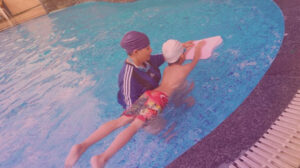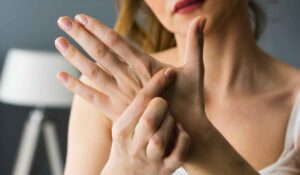What’s life becomes with Muscular Dystrophy
Duchenne Muscular Dystrophy (DMD) is an incurable genetic disease that impacts the muscle tissue. It is more common in male then female and it affects around 1 in 3500 male births. Noticeable symptoms of Duchene Muscular Dystrophy often appear between the ages of 3 and 6. These symptoms appear as obvious muscle weakness and muscle wasting. A person with Duchenne Muscular Dystrophy commonly ends up in a wheelchair by their teenage years. Other life-threatening conditions may arise from it – including heart and respiratory complications. Although a difficult diagnosis, physical therapy can help an individual with Duchenne Muscular Dystrophy reach their full potential.
What Does Duchenne Muscular Dystrophy Mean?
The question, “What is DMD?” is a common one. Essentially, Duchenne muscular dystrophy (DMD) is caused by a gene mutation– specifically in the DMD gene. This gene plays a vital role in the production of the protein, dystrophin. Dystrophin offers support and protection to the muscle tissue. Individuals with DMD do not produce dystrophin. As a result, the muscles become damaged each time they are used. Females are often carriers of the gene mutation. The inherited gene is frequently noticed in male children when they fail to reach major physical developmental Milestones For instance, the child may have difficulty learning to walk, run, or jump. Genetic testing, blood tests, and sometimes, a muscle biopsy confirm the diagnosis.
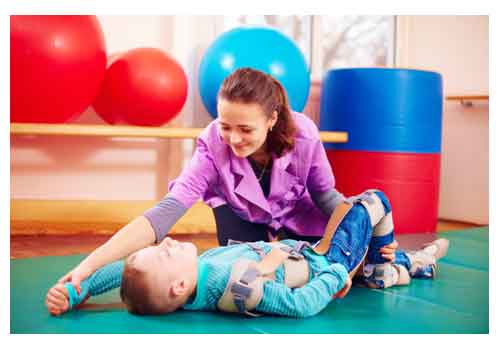
How is Duchene Muscular Dystrophy Treated?
While there is no cure, treatment options do exist to slow the progression of the disease. These Duchenne muscular dystrophy treatment options focus on treating the symptoms. Physical Therapy plays a large role in treatment of DMD. Treatment frequently varies from person to person. While physical therapy emphasizes mobility and, where possible, strengthening of large muscle groups, occupational therapy focuses on specific activities and functions. Occupational therapy can help with tasks for work, recreation, or daily living, such as dressing or using a computer.
Weakness is a natural component to muscular dystrophy. However, it can play a minor role compared to disuse. Physical therapists can help guide patients to the appropriate amount and type of exercise through carefully tailored routines. As muscles atrophy, a skilled physical therapist can provide adjustments to exercises as well. The therapist can recommend games and fun activities that increase strength, lessen the risk of obesity, and improve heart health.
Physical therapists help children master vital developmental skills, such as crawling, jumping, climbing and eating.
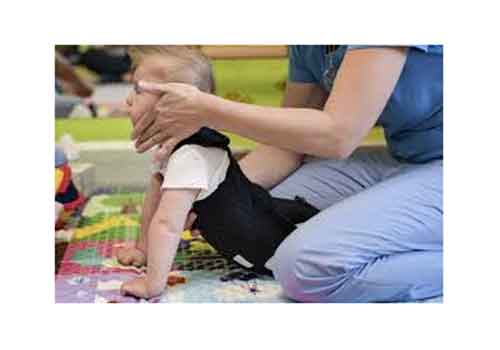
When looking for a physical therapist, it’s important to find someone who has experience in pediatric physical therapy and muscular dystrophy. She should be willing to work with other health care professionals and coordinate care with you, the parent or caregiver.
Duchene Muscular Dystrophy Treatment Options include various things like exercises, mobility with Assistive Devices eg-Braces, canes, and wheelchairs are eventually recommended for DMD patients. These devices help to reduce muscle damage and improve independent mobility. A physical therapist is often give proper guidance and enlisted to help show the patient and caregiver how to use each device to their advantage properly.
Duchenne Muscular Dystrophy Physical Therapy Treatment
As a fore mentioned, physical therapy is often recommended, and pediatric physical therapy is an excellent option for younger patients. In fact, Duchenne muscular dystrophy physical therapy treatment is frequently a critical part of decreasing symptoms. A physical therapist focuses on active and passive exercises to improve muscular strength and prevent or slow muscle deterioration.
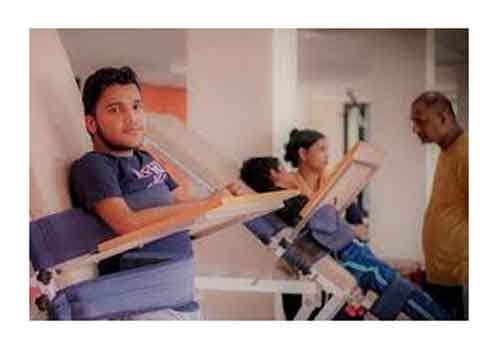
A Physical therapist will help reduce or prevent joint contractures, work on respiratory strength and breathing patterns, improve skill development and offer recommendations an adaptive devices for the individuals environment. Physical therapy also focuses on education for the patient and the caregiver. Individuals with DMD will often see a physical therapist throughout their entire lifetime. So it is very important to consult a excellent pediatric physiotherapist.
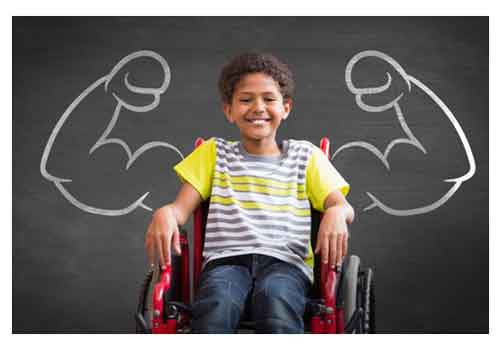
Respiratory care
As the muscles that assist in breathing get weaker, the bronchial system must be kept free of secretions, either by using a technique that is manual assisted coughing or cough assisted device with the help of a pediatrics physiotherapist you can learn the proper technique. A respiratory therapist can be consulted for the needed information. At some point, ventilation may be needed to help provide sufficient air flow into and out of the lungs.
Weakness
Proximal weakness affects the lower before the upper extremities, with progression to the point of wheelchair dependence. Eventually distal lower and then upper limb weakness occurs. Weakness of neck flexors is often present at presentation, and most patients with DMD have never been able to jump. Patients have a waddling gait, calf enlargement, and lumbar lordosis which disappear on sitting. Most become wheelchair-bound by age 11-12 years. This can be delayed by proper physiotherapy and rehabilitation.
Spinal curvature
Spinal curvature are common in DMD, in young man with DMD, the spine can be gradually pulled into a curved shape. The spine may curve from side to side (scoliosis) or forward (kyphosis). Scoliosis usually appears after a boy has started using a wheelchair full time. The “swayback” curvature that’s sometimes seen in those who are still walking is called lordosis.
Severe scoliosis can interfere with sitting, sleeping, and even breathing, so measures should be taken to try to prevent it before its appear. For that you have to consult a pediatrics physiotherapist. so that they will guide you for proper precaution and various exercises for maintain the natural spinal curve. Exercises to keep the back as straight as possible and advice about sitting and sleeping positions can be obtained.
Exercise can help build skeletal muscle, keep the cardiovascular system healthy, and contribute to feeling better. But in muscular dystrophy, too much exercise could damage muscle. Consult with your doctor about how much exercise is best. A person with DMD can exercise moderately but should not go to the point of exhaustion.
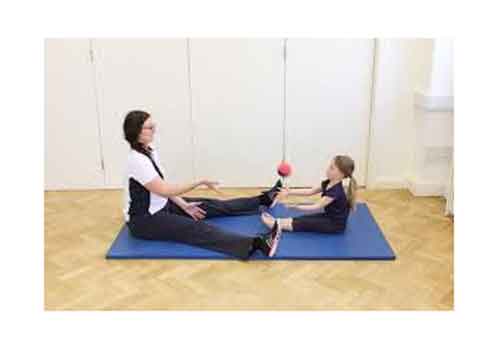
Many experts recommend swimming and water exercises (aquatic therapy) as a good way to keep muscles as toned as possible without causing undue stress. The buoyancy of the water helps protect against certain kinds of muscle strain and injury. This can be done in hydrotherapy under the guidance of well qualified physiotherapist.
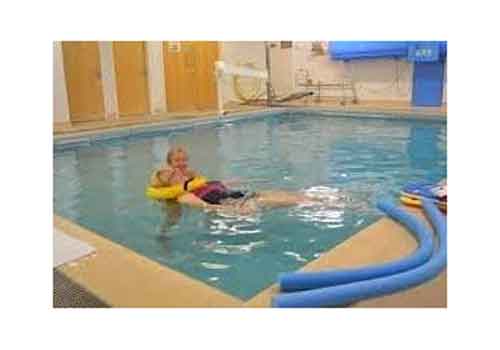
Contracture
The impact of DMD can be minimized significantly by keeping the body as flexible, upright, and mobile as possible. There are several ways to do this.
As muscle deteriorates, a person with muscular dystrophy often develops fixations of the joints, known as contractures. If not treated, these will become severe, causing discomfort and restricting mobility and flexibility. Contractures can affect the knees, hips, feet, elbows, wrists, and fingers.
However, there are many ways to minimize the contracture the Range of Motion exercise performed on a regular schedule, help delay contractures by keeping tendons from shortening prematurely. It is important that a physical therapist show you how to do range-of-motion exercises correctly.
Braces on the lower legs also can help keep the limbs stretched and flexible, delaying the onset of contractures.
When contractures not cure at time then it become difficult to treat and , surgery may be performed to relieve them. A tendon release procedure, also called heel cord surgery, is often done to treat ankle and other contractures while the child is still walking.
Cognitive and Behavior disorders
Children with DMD who are suspected of having a learning disability can be evaluated by a developmental or pediatric neuropsychologist, either through their school system’s special education department or at a medical center with a referral from the MDA Care Center. DMD is associated with increased rates of autism spectrum disorders, attention deficit hyperactivity disorder, anxiety, and depression, which may also require adequate medical management.
Intellectual disability
Intellectual disability is seen in 30% of boys with DMD, with the average intelligence quotient (IQ) being 85, normally distributed one standard deviation below the population norms. Verbal IQ is more impaired than performance IQ. Boys with DMD also have a higher incidence of attention deficit hyperactivity disorder and this can be overcome by various exercise and yoga as well.
YOGA for muscle dystrophy
Yoga can help to ease the symptoms of Muscular Dystrophy and improve quality of life. Yoga’s gentle movements in combination with pranayama (breathing techniques) can improve muscle tone and reduce pain, increasing the flow of oxygen, nutrients, and energy through the body, and enabling the more efficient expulsion of toxins.
Yoga, meditation and mindfulness can also help alleviate the depression and anxiety that characterize this debilitating illness. Calming the mind and perhaps attending classes with fellow sufferers can better enable the patient to cope with hope and energy.
TREATMENT OF CEREBRAL PALSY BY BEST PHYSIOTHERAPIST SERVICES IN DHAKOLI
In Muscle Dystrophy this become very crucial to consult a pediatric physiotherapist and a qualified physiotherapist is skilled enough to help to cop up with difficulties which are face by patient. Because in this condition the correct form of exercise are very important because without fatigue we have to gain more strength. This is only done by a well qualified pediatric physiotherapists who have proper knowledge regarding the condition and have experience in the field of pediatrics moreover must know how to deal with children. The physiotherapist examines the difficulties which are face by the patient and work precisely on them.
They give proper guidance and provide moral support and fully friendly environment to the patient and family. This ultimately leads to strong mental state. Physiotherapy of muscle dystrophy of child is life long process, along with the therapist, the support of family and relatives is very important because with MD life become very difficult not only for child but also for family but with little touch of love and care and proper scientific knowledge it becomes easy to deal with this and Blossom physiotherapy provides the same thing.
Blossom physiotherapy has, well qualified team of physiotherapist in dhakoli. Ultra modular equipment for balance, fine movement. They provide world class technique. And also research- based technique of rehabilitation to overcome the difficulties face by the child. Here consultant physiotherapist Dr Jyoti Gupta she is a pediatric physiotherapist and having great experience in dealing with pediatric age patient and work on patient’s various difficulties and work accordingly. So that patient can learn to live with various modifications in life which are mandatory in this case. Blossom physiotherapy also provides yoga which will give excellent result in behavior and breathing difficulties as well. So in the end Blossom physiotherapy is ready to help you in every manner. For further information log into blossomphysitherapy.


